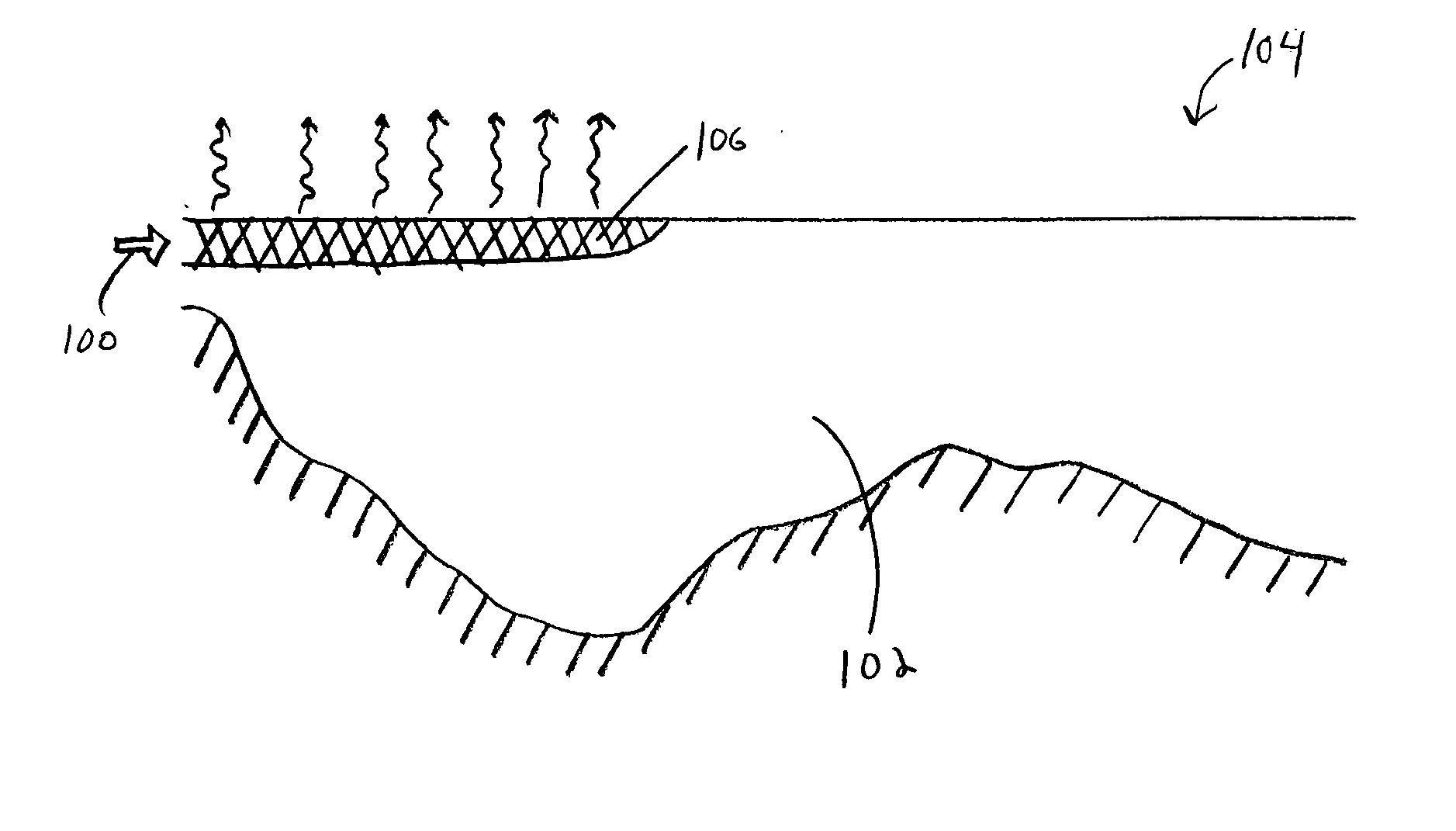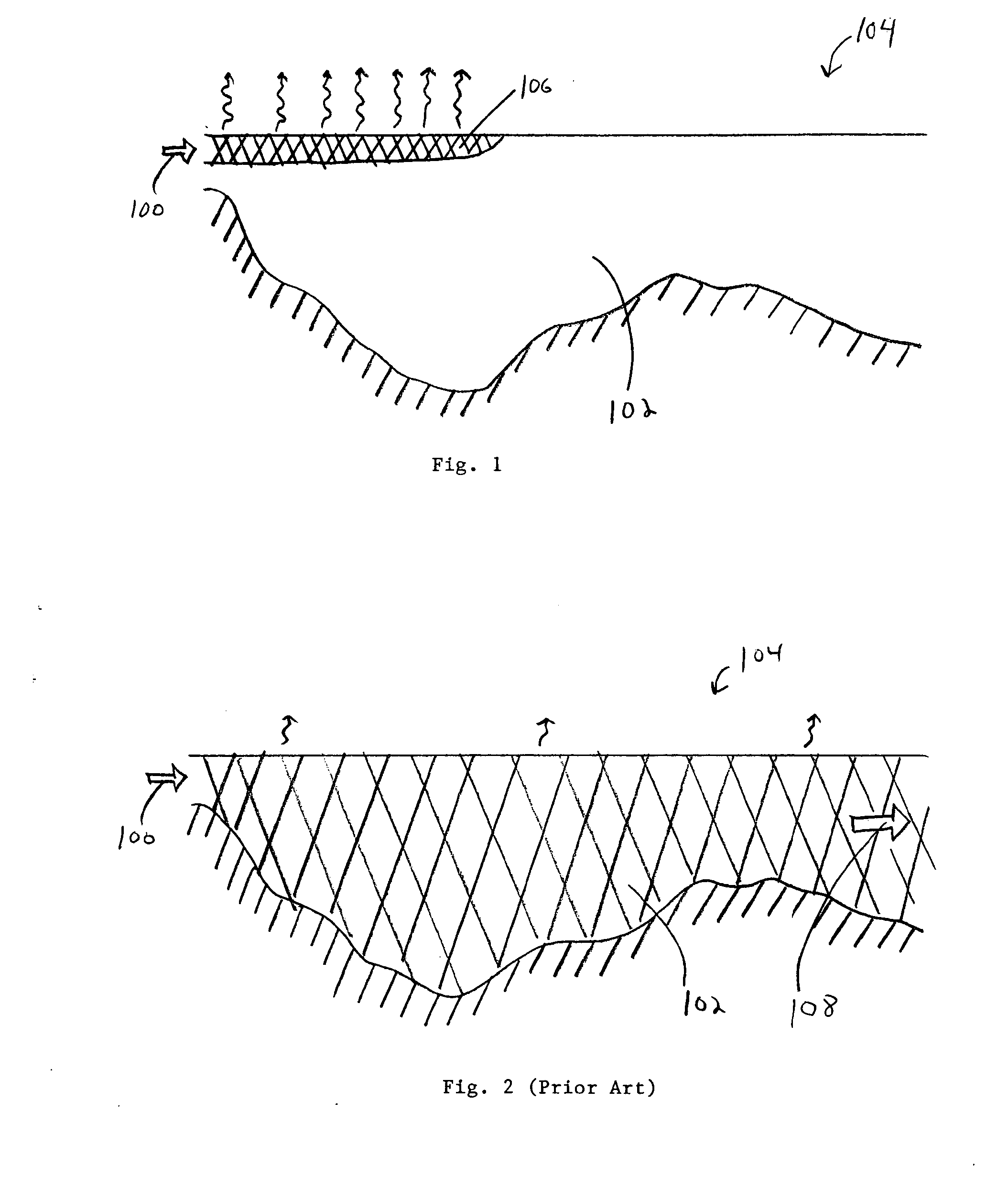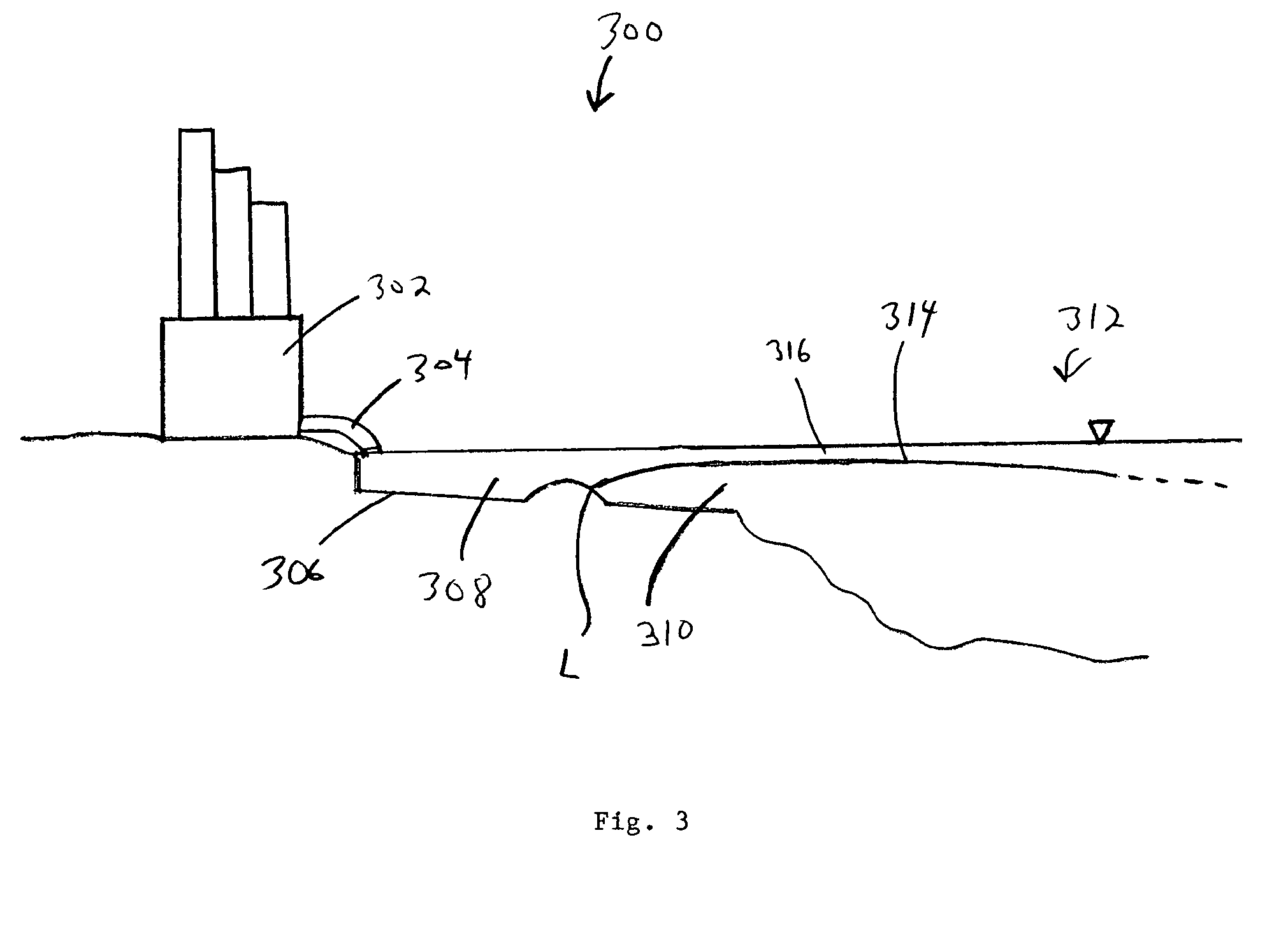Enhanced surface cooling of thermal discharges
a technology of thermal discharge and surface cooling, which is applied in the direction of lighting and heating apparatus, ventilation systems, heating types, etc., can solve the problems of requiring the construction of extremely costly on-site cooling towers, and few, if any, existing u.s. facilities have been retrofitted with a full-scale cooling tower system, so as to facilitate surface cooling, increase heat transfer, and enhance heat transfer to the atmosphere
- Summary
- Abstract
- Description
- Claims
- Application Information
AI Technical Summary
Benefits of technology
Problems solved by technology
Method used
Image
Examples
##ic example # 1
PROPHETIC EXAMPLE #1
[0066]First, we model a system that does not include aspects of the invention disclosed herein. Consider a discharge canal optimized for mixing with the following characteristics:[0067]Temperature difference between discharge and ambient water, ΔT=10° C.;[0068]Flow rate of discharge water, Q0=40 m3 / s;[0069]Depth of canal, h=4 m; and[0070]Width of canal, b=5 m
[0071]Given these initial values, the following values can be calculated from equations defined herein and from standard formulae:[0072]Velocity of discharge water, u=2 m / s;[0073]Excess heat flux discharged to receiving water body, Ho=1673 MW; and[0074]Reduced gravity, g′=0.025 m / s2.
[0075]to With the assumption that the entire plume exists within a bottom boundary layer, we calculate stress as τ=CDρu2, where CD=3×10−3. This yields a stress of 12 Pa. The shear production of turbulent kinetic energy, can be estimated as
P=τρ∂u∂z.
The amount of TKE converted to potential energy through mixing in a stratified envir...
##ic example # 2
PROPHETIC EXAMPLE #2
[0081]A modification to the system described in prophetic example #1 may be made by introducing a moving layer of ambient water underneath the discharge water to separate the shear region from the stratified region. In theory, this separation should shut down mixing completely due to values of Rig within the stratified region being much greater than ¼. However, production of unstratified turbulence within the shear layer will occur, which may be transported upward in the water column, eventually impacting the stratified region and resulting in mixing, however, a reduction in mixing on the order of approximately one order of magnitude is reasonable to assume. Thus, the atmospheric heat loss (1−H / Ho) in this prophetic example would be on the order of 36% of the total discharged excess heat load. This result is shown as point C in FIG. 12, corresponding to a value of
E=QoQ(1-HHo)=(0.5)(0.36)~0.2
Note that this heat loss is now of the order of the total dilution associ...
PUM
 Login to View More
Login to View More Abstract
Description
Claims
Application Information
 Login to View More
Login to View More - R&D Engineer
- R&D Manager
- IP Professional
- Industry Leading Data Capabilities
- Powerful AI technology
- Patent DNA Extraction
Browse by: Latest US Patents, China's latest patents, Technical Efficacy Thesaurus, Application Domain, Technology Topic, Popular Technical Reports.
© 2024 PatSnap. All rights reserved.Legal|Privacy policy|Modern Slavery Act Transparency Statement|Sitemap|About US| Contact US: help@patsnap.com










